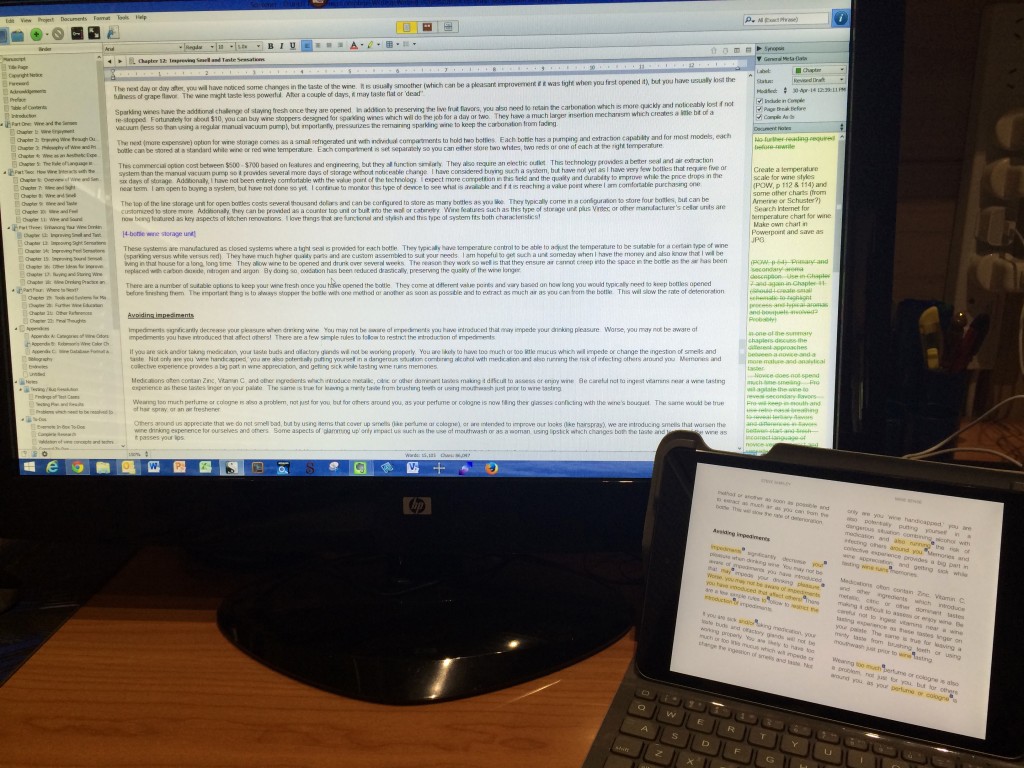It is difficult to define what is original draft writing, what is re-writing and what is book editing and proofreading. For my current WIP, Wine Sense, I spend approximately six months writing the original text with about 15% of the book rewritten during this original pass as writing later chapters triggered thoughts on rewriting earlier ones.
I then entered a phase I considered to be rewriting, which involved playing with the structure, determining if a topic was dealt with in enough or too much detail. I also questioned if I was missing important topics, if they required further research and validation and if some topics should be parked for treatment in other books. When finishing that pass, I considered Wine Sense to have been written in draft form and I was now onto book editing.
My third pass was with the purpose of making the text tighter and easier to digest. This involved removing extraneous words and breaking down compound and too-complex sentences. This effort resulted in a reduction of 11.5% word count.
I am onto my fourth round of revising the book from the eye of a copyeditor and have made about 1,200 more changes. The changes included:
- deletion of more extraneous words
- resolving confusing pronouns
- replacing words with better words to make the topic clearer
- changing passive to active writing
- changing punctuation to change emphasis, etc.
For this round, I used a two-step process. I wanted to sit and read the book as a ‘normal’ reader would on my Kindle app (instead of editing directly in Scrivener on my laptop), and when I found an issue, I would highlight it and annotate what the change should be. Every now and then I would bulk apply the edits to my source text in Scrivener. This accomplished two things: (1) it provided me another chance to validate and accept the edit before applying it, and (2) it allowed me to read the text as a ‘reader’ and not a copyeditor or proofreader which provided a different lens into editing.
However, it did double the amount of time I spend book with this pass of book editing, adding about 25 – 30 hours to the process. I am trying to figure out a better way to accomplish this using only one pass, but feel I will lose something. I could use the side-by-side views of Scrivener, but then I would miss the opportunity to re-edit or further edit about 15% of my edits on the iPad by reviewing them a second time. Given I have been working on the book for approximately one year, another 30 hours of editing should not be considered a problem. As I continue to improve my copyediting skills, I may consider doing this as one pass in the future, but for now, I will keep it at two.
The next pass will be proofreading the text by other people who I am certain will pick up a number of other errors.
How do you write and perform book editing? Is it using similar processes or something quite different? I want to continue to learn.
Steve Shipley, author of Wine Sense, out July 2014
© 2014. InkIT Publishing. All rights reserved.
InkIT Publishing on Facebook
Inspirational Writing and Publishing Pinterest Boards
Twitter: InkIT Publishing @inkitpub; Steve Shipley @shipleyaust

